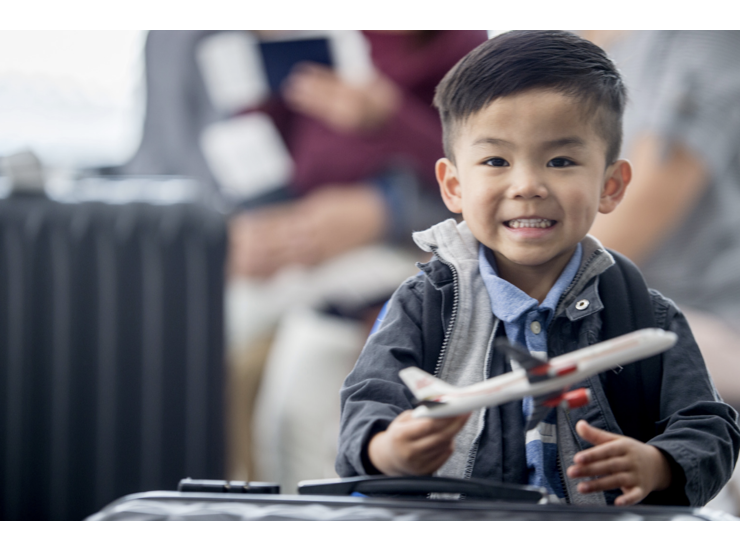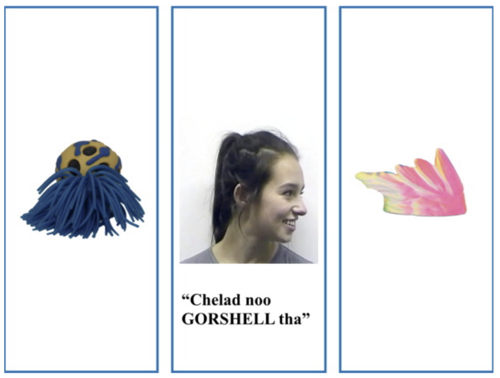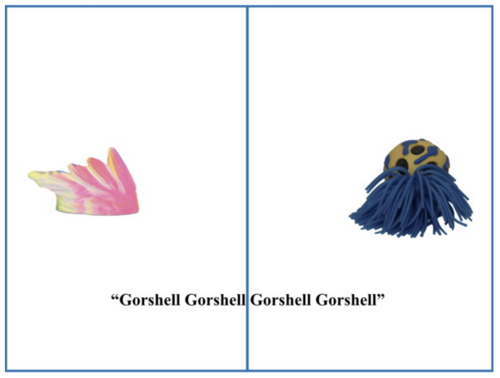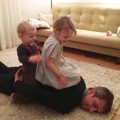
Your plane has just landed in a distant country, you’re out into the airport. But nothing makes sense: You don’t understand the language, you can’t figure out what the signs say, and you don’t know how to find your way to the exit. That just gives us an inkling of the task facing a child learning language for the first time. There’s a bewildering medley of sounds coming from the mouths of other people, and somehow those sounds have to be linked up to the constantly changing world going on around us. It’s a daunting task, especially when you’re facing this for the first time as a child.
But there is help out there. Parents also help children to learn by adding in even more information that guides children to what is being talked about. For instance, we quite naturally use gestures either by pointing or looking towards what we are talking about when we say new words (“look, a cup!”). These gestures, though, are not 100% reliable. Usually we look at an object when we’re talking about it, but not all the time. How do children cope with that variation?
It turns out that the variety and noisiness in the language and the environment often helps rather than hinders children’s learning. It makes the world more interesting and that helps them to find their own way through it by sparking their curiosity.
In Dunn et al. (2024), we tested exactly what children do when a speaker isn’t looking at the thing being talked about all the time. Seventeen-month-old children recruited in and around Lancaster were tested at the Lancaster Babylab, where they observed two objects and heard a new word, then had to figure out which object was being referred to. That can’t be done from just one situation, but after a while, children begin to be able to link the object that often occurs with the word. Half the children saw a speaker looking to the object that was being named, and half the children saw a speaker looking only some of the time.

After learning, children were then tested by hearing a word and seeing the objects but without the speaker looking at all.

We found that children were able to learn the new words regardless of whether the speaker looked reliably or unreliably. But how the children learned was very different. When the speaker sometimes looked at the named object, children looked for a longer time at the speaker, and they also looked for longer at the object that wasn’t being talked about. When the speaker always looked at the named object, children were less interested in the speaker and the other object, looking almost only at the object being talked about.
What does this mean for children’s language learning and how we can support that? Well, first of all it means we don’t have to be perfect teachers – because parents are sometimes distracted, sometimes have other things going on, that turns out to be fine, without affecting children’s language learning. Second, children seem to find this variety helpful. It means that children keep attention on us as their guide to what is being talked about, and also remain open to looking around at other stuff in the world - more curious, perhaps. Third, it means that to support children’s language learning we can relax – and go with what is natural – we don’t need to worry about providing perfect information all the time, what we can do to help children learn is just talk. And the more the better.
Reference:
Dunn, K., Frost, R., & Monaghan, P. (2024). Infants' attention during cross-situational word learning: Environmental variability promotes novelty preference. Journal of experimental child psychology

